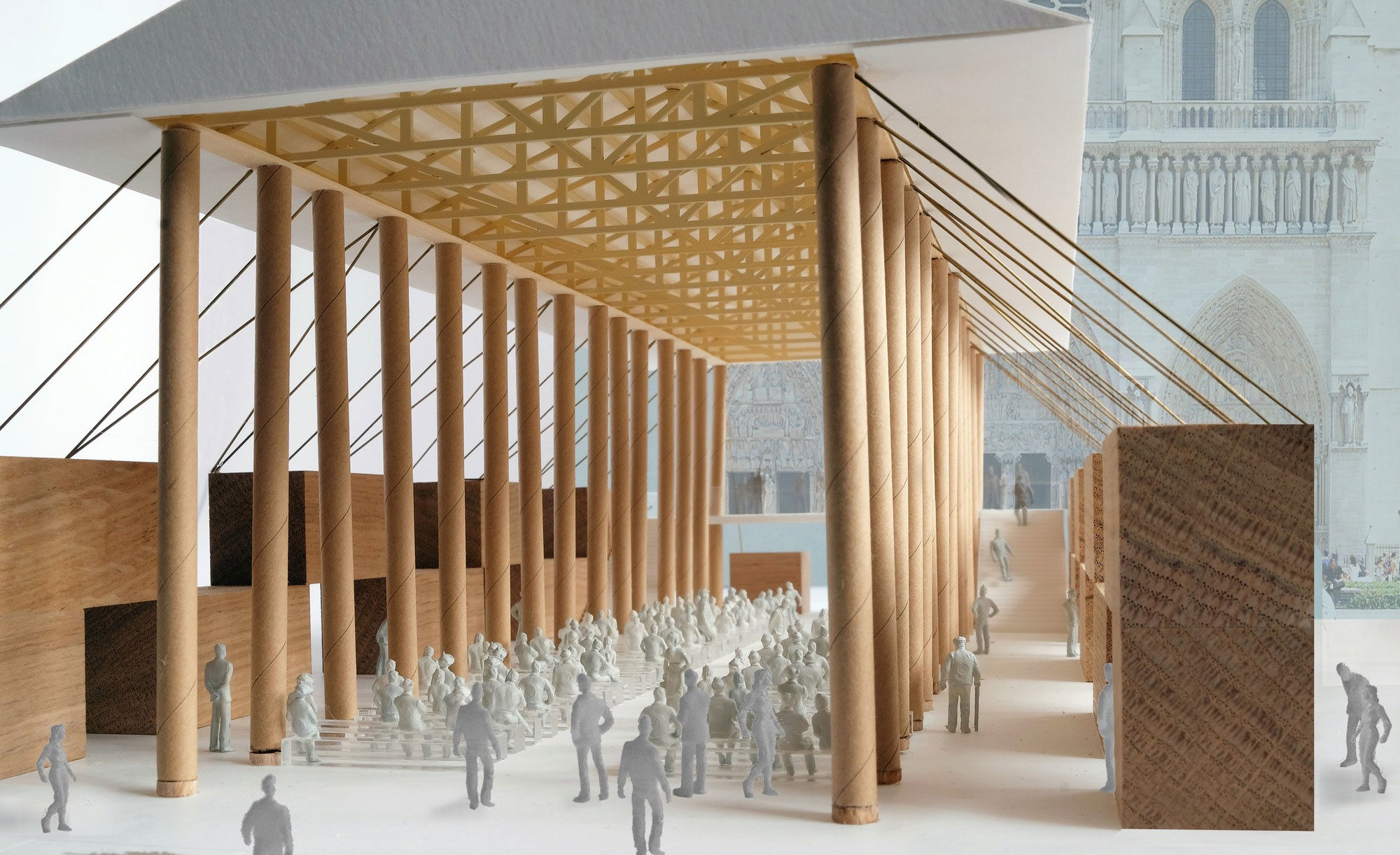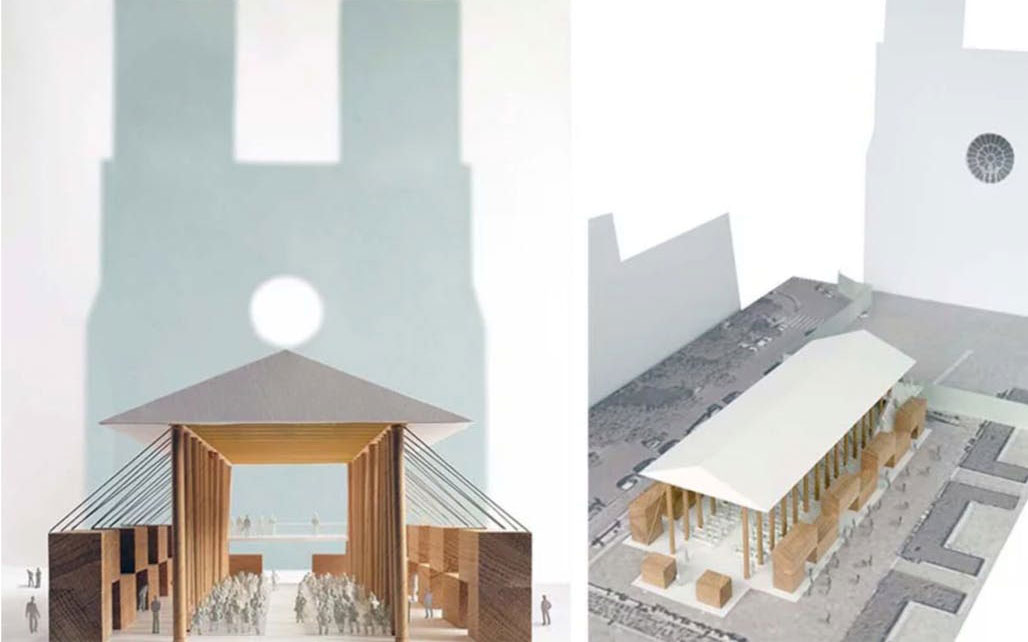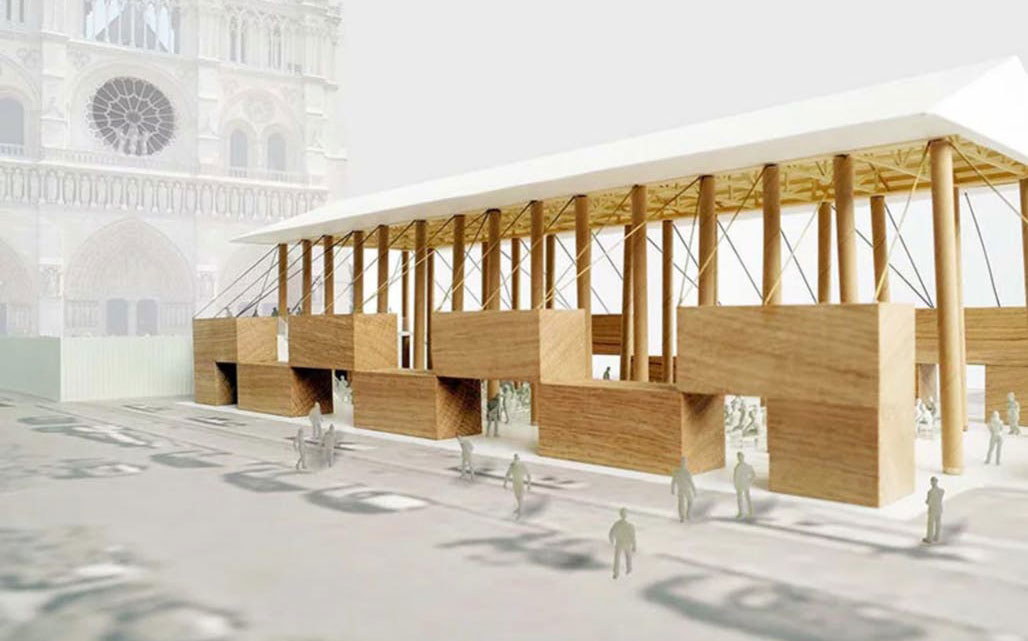By now, architectural proposals for replacing—temporarily or permanently—the parts of the Notre-Dame de Paris Cathedral consumed by a massive fire in April are a dime a dozen. In the last few days alone, we’ve seen renderings from uncommissioned architects that include a rather impressive multistory screen that would wrap around the worksite, an indoor greenhouse, and a rooftop pool. Given that the French government is already well on its way on a plan to replicate the lost sections of Notre-Dame as faithfully as possible, all of these concepts, be they serious or satirical, will allow to little more than amusing. Frankly, crafting Notre-Dame proposals is more of meme than a serious undertaking.
But then there is the graceful, intelligent proposal from 2014 Pritzker Prize winner Shigeru Ban. Here, the architect and his firm have answered one of the key issues confronting anyone trying to develop design solutions for Notre-Dame: while a tourist attraction, it is also a recovery and construction site, and a functioning house of worship.
Locating his structure in the cathedral’s massive forecourt, Ban proposes a simple and temporary structure of sustainably-sourced, common materials: rope, shipping containers wrapped in cardboard, and paper tubes. Functioning as a sheltered nave that is otherwise open to the elements, the space would offer a room for many to worship at once while offering a simulacrum, or ghost of the vacant cathedral, through its interior pillar construction, ceiling, and aisle. Rope would support mimicking flying buttresses on the outside. Easy to set up and easier to disassemble, it’s mostly a recyclable solution to what is hopefully a temporary problem.



